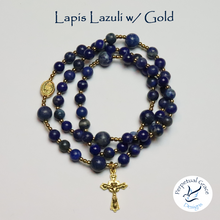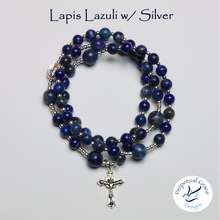Vibrant Lapis has been utilized as a gemstone for thousands of years. The ancient Egyptian mask of Tutankhamun is adorned with lapis lazuli inlays. The ancient Egyptians used powdered lapis as a cosmetic (Cleopatra’s eyeshadow!). Renaissance painters ground it for brilliant ultramarine pigment. Pre-Columbian South American cultures traded and carved lapis sculptures. Our stunning lapis beads are a brilliant royal blue and are dotted with flecks of golden pyrite. Many of these lapis beads are also marbled with veins of gray-white calcite. Cleopatra, eat your heart out!
Lapis is also known as Lapis Lazuli. The mineral lazurite is the main component of lapis and accounts for the stone’s intense blue color - although lapis often contains pyrite, calcite, sodalite, and hauyne as well. Lapis is not a mineral, but rather a metamorphic rock composed of many minerals. Some of the best specimens are sourced from Afghanistan and Pakistan.




